Teen magazines
by Tony Quinn
Magazines for teenagers – like the word teenage itself – are an invention of the 1950s and early 1960s. Honey under Audrey Slaughter is regarded as the title that set the trend in the UK, along with its younger spin-offs such as Petticoat. Teen magazines became a big-selling sector – Emap's Smash Hits sold 500,000 copies a week in the mid-1980s – but changes in demographics (in 1990, the number of 17 to 24-year-olds was forecast to fall from 7m to 6m by 1995) and the way teenagers spend their money (even though they had more cash) led to casualties because titles faced competition from the web, computer games, mobile phones and social media. The number of teen magazines with ABC sales figures give a measure of the decline:
- in 1998, 11 titles sold 2,441,163 copies a month (Smash Hits, Just 17, Looks, Jackie, Mizz, Company, 19, Number One, Girl, Blue Jeans and My Guy);
- in 2006, nine titles had 852,004 sales (Sugar, Bliss, Cosmo Girl, Top of the Pops, Shout, Mizz, It's Hot, TV Hits and Kiss);
- at the end of 2008, six titles sold 568,095 (Sugar, Bliss, Top of the Pops, Shout, Mizz and Kiss)
- By 2011, Sugar had closed. This left just Top of the Pops (with sales dipping below 100,000), Bliss, Shout and Mizz (with Kiss doing well in Ireland) of the main teen titles, though the BBC had launched Girl Talk for girls and early teens. There were also three football titles: Match of the Day (which was relaunched for a younger audience), Match and Kick!.
- By 2018, only Top of the Pops (45,036) and Shout (37,128) were still registered. That's a fall from total sales of 2.4m to about 80,000 in 20 years – 97% down.
Factors in the decline included:
- the 'Kagoy' factor – kids are getting older younger – and teens tended to want to buy older titles;
- from 1978, Smash Hits switched the focus to pop;
- in 1990, Smash Hits publisher Rita Lewis told Marketing Week (23 February, p22) that a fall in sales was down to a fickle music market: 'We had an influx of new and very young readers last year ... They were mad about Kylie Minogue, Jason Donovan and Bros and ran around buying everything that had them in. When the crest of the wave is over, you lose readers. But all this stuff about demographics is rubbish and we are still very confident in the market.' However, elsewhere the trend for older young women to migrate to fashion and celebrity magazines was noted;
- the changing behaviour of teenagers produced jargon for sub-sectors, such as 'tweenagers' – children aged 9 to 13;
- 1994 was a boom year for sales;
- lads' mags such as Loaded influenced the teen titles with 'sexier' content and the launch of titles such as Minx in 1996;
- sales in the sector peaked in 1998;
- the likes of Cosmo, Vogue and Elle played to the Kagoy factor and tried to tie their readers in early with teen versions;
- from the late 1990s, publishers ran into celebrity weeklies attracting teens (driven by celebrity TV) and the deadly competition posed by competing media delivered on the web and through mobile phones;
- the launch of men's weeklies Nuts and Zoo in 2002, which attracted men from 16 upwards, took away teenage readers from other titles. They closed in 2014 and 2015;
- in 2006, Dennis launched the first men's digital weekly, Monkey;
- in April 2007, National Magazines launched Jellyfish, a digital weekly for teens, in a trial. However, this closed in August despite having been relaunched for an older audience.
Yet there was hope! Egmont launched We Love Pop in 2011, aimed at girls aged 13 to 15 (sales of 26,615 in 2017).
The teenage sector can be divided into:
- comics;
- entertainment, such as music (see Music magazines page) and football magazines;
- lifestyle (mainly fashion and boys).
Table 1 gives the sales figures for the core titles in 1988. Table 2 gives the biggest selling titles in 2010 and 2008. Table 3 lists all the titles on this page with details such as publisher and launch (closing) date.
Teen titles have frequently been condemned for encouraging sex at an early age, but since 2005 education officials have encouraged teachers to use magazines in class to help teenagers discuss their problems. The PPA ran a Teen Magazine Arbitration Panel (TMAP) as a self-regulatory body to ensure that the sexual content was presented in an appropriate way.
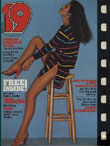 19
magazine for women in their late teens. The cover above is
from 1977 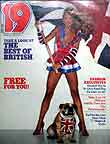 |
19 [closed]IPC SouthBank, monthly, 1968 – May 2004Young women’s glossy aimed at 16- to 19-year-olds. The established magazines in this sector all steadily lost sales after 1980. 19 was the last survivor of the three big IPC titles: Honey merged with 19 in 1986 after circulation almost halved in five years; a similar fate befell Look Now in 1988. These mergers helped 19, but its sales were still down by about a fifth in 1990 over the decade. When it finally closed, IPC said: 'Over the last few years, the face of the teenage market has changed. The boundaries between the teen market sub-sectors have become blurred and sales patterns suggest that readership at the older, young women’s end appears to have migrated to the fashion and celebrity markets.' Final editor was Helen Bazuaye. The publisher launched Teen Now, a spin-off from its celebrity weekly Now in spring that year and in March Emap had closed The Face and J-17 (Just 17). IPC profile Teen sector in distress |
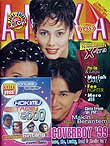 Aneka
Yess! cover from 10-23 December 1999 |
Aneka Yess! (Indonesia)Fortnightly teen title for girls. Stapled title that uses better quality, coated paper for outside pages and poster centre spread. |
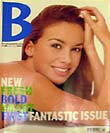 First
issue cover of B in June 1997, which wanted to attract
older Sugar readers |
B [closed]Attic Futura (North South) / Hachette Filipacchi UK. Monthly.
June 1997 – March 2006 HFUK gained control of B when it took over Attic Futura
in August 2002 for £40m. The company suspended publication
in March 2006 after falling sales – the July to December ABC 2005
circulation figure fell by 10% to 150,536. |
Big!Emap Metro. Fortnightly / Monthly. 14 Mar 1990- The launch was designed to strengthen the group's share of the teenage market. It came out as a monthly, going fortnightly – to alternate with pop title Smash Hits – on April 11. It focused on TV, music and film celebrities and cost 60p. Big sought out the same age group as Smash Hits, with an average age of about 15. It was promoted in Smash Hits and Just Seventeen. The managing editor was Bev Hillier, a former Just Seventeen editor; editor David Bostock had been art editor of the same title. Emap was aiming for an average 120,000 sales in the first year. In the first half of 1991, sales were at 257,584, while the company's Smash Hits fell 24.4 per cent year-on-year to 420,239. Dawn Bebe appointed editor in 1993; she went on to launch Bliss in 1995 and edit New Woman in 1996 (where she instigated a Weird Willy spot). Relaunched in December 1999 with the Back Street Boys on the cover and the tag line 'Closer to the stars'. |
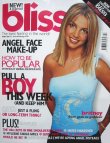 'Really
smutty' Bliss followed
IPC's Mizz to Panini in 2003 |
Bliss / It's Bliss [closed]Emap/Panini UK. Monthly. June 1995-2014 In 2002, editor Helen Johnston relaunched the title (£1.75; 240 pages) in A5 format with a cover gift of a see-through plastic shoulder bag. In 2003, Amy Astley, editor of Teen Vogue in the US, said she was shocked by UK titles such as Bliss. 'They are really bad,' she told the Observer newspaper. 'They are really smutty. They have a real focus on sex and that's not what we are doing at all. That is not our focus.' Astley, whom the article by Paul Harris described as a 'protegee of legendary Vogue editor Anna "Nuclear" Wintour', produces a fashion-based title with a no-sex rule. In December 2006, Panini bought the title from Emap with sales at 151,729, having bought Mizz from IPC in March. Both teen titles had seen substantial falls in sales in the previous year, which was put down to competition for teenagers' money from other media and the switch to web and mobile-phone based products. At the end of 2008, sales had dropped to 107,112.Emap profile Panini profile |
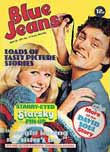 Blue Jeans issue 14 in 1977 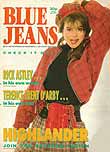 Blue Jeans issue 568 in 1987 |
Blue Jeans [closed]DC Thomson, Dundee. Weekly. March 1977 -? |
|
Chatterbox [closed]BBC Magazines, London. Fortnightly. March 1995 -?The BBC was seen as trying to develop a new niche with the launch of two fortnightly titles for the younger, 'no boys' end of the youth market, Chatterbox and Girl Talk, which sold about 86,418 and 80,044 copies respectively. BBC Magazines profile |
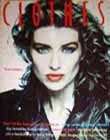
Clothes
Show – cover from spring 1988 with newsreader Selina Scott on
the cover |
Clothes Show [closed]BBC Magazines, London. Monthly. 1984?- December 1997First of the modern BBC-related launches. Originally this style magazine was licensed by the BBC to a small London publisher, Focus Publishing. It was based on the TV series of the same name fronted by Jeff Banks and aimed at 16-to 24-year-olds. In 1990, Focus folded, but it had shown the way for the BBC. The title was taken over and revamped by BBC/Redwood but never fully accepted as a BBC brand. When it closed, Clothes Show was seen as struggling to compete against Looks, 19 and Sugar, selling 150,494 copies a month, a figure down nearly 3% on the previous year. The publisher felt too much money would have had to be invested to hold that circulation. Sugar's sales had increased 31% to 474,104. BBC Magazines profile |
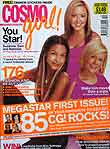
First
issue cover of Cosmo Girl! The magazine came with a set of Eminem
stickers
|
Cosmo Girl! UK [closed]National Magazine Co., London. Monthly. October 2001-September 2007Celia Duncan was chosen as editor for the UK version (£1.49; 148pages) of this teenage lifestyle title, which had been launched in the US in 1999. The magazine has the tagline: 'For fun, fearless teens.' The launch issue came with Eminem stickers and cover lines included '85 favourite celebs' and '176 fashion and beauty finds'. In 2007, NatMags chose a new name, Jellyfish, for a digital teen magazine rather than sticking with the Cosmo Girl! brand. The digital title and Cosmo Girl! were closed at about the same time, though it did outlive rival Elle Girl. The US version was distributed in the UK until it closed in 2008 Nat Mags profile |
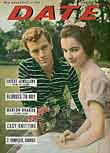
Date (August
27 1960) |
Date [closed]Odhams, weekly, incorporating Picturegoer, 1960-?Date was printed by Odhams (Watford) for Odhams Press, Long Acre, WC2 and the editorial office was at 189 High Holborn, WC1. It cost 5d for 40 pages, measuring about 12in by 9in. Regular features included a ‘Coffee Club’ hosted by Sylvia Lamond and the 'Jean Age Beauty Club'. |
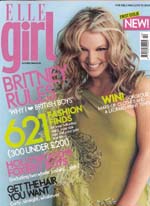 Elle
Girl magazine first issue cover. Hachette's magazine 'for
girls who love to shop' lasted four years |
Elle Girl [closed]Emap / Hachette Filipacchi UK, London. Quarterly. Autumn 2001 – autumn 2005Fashion-based title 'For girls who love to shop' (£2.20; 132 pages; editor Sarah Bailey for the launch issue). Aimed for the12 to 17-year-old girl market backed by a £1m marketing budget. The first issue came with a fashion vest (in cool black or lipstick pink) plus stickers. Emap profile HFUK profile |
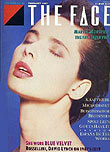
The
Face: style bible of the 1980s. This 1986 cover is of Isabella
Rossellini, who had appeared in David Lynch's Blue Velvet
|
(The) Face [closed]Wagadon/ Emap. 1980 – May 2004Nick Logan launched The Face in 1980 using his own money after Emap turned the idea down. Iconic design by Neville Brody. Strong music base; developed to embody cutting-edge youth culture in the 1980s. Emap bought the title in 1999, along with Arena, from Nick Logan's company Wagadon. The closure – along with that of J17 - was blamed on the changing marketplace and falling sales. Background to The Face launch Emap profile |
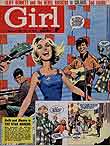 Girl -
22 February 1964, still in a comic format
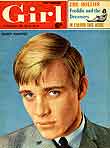 Girl -
12 September 1964. Sultry-looking Bobby Shafto was on the front and
the Hollies on the back
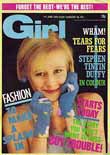 Girl -
issue 225 from 1 June 1985
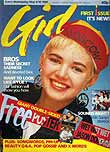 Girl -
relaunch numbered from 1 (4 May 1988) |
Girl [closed]Hulton/Odhams/Longacre, London. Weekly. 1951-64There have been two incarnations of this title. The first was 'sister' to Eagle comic. Like Eagle, it used a large (A3-ish) format with colour printing and bold graphics. Its Dan Dare equivalent was Kitty Hawke. Although pop music became a big feature of the title, the comic strip cover was maintained until 1964 when it was replaced by a pin-up. Contents of 22 February issue:
The redesigned 12 September issue ran similar contents, but Belle & Mamie were moved from the cover to the centre-spread. On the back was a poster of the Hollies and the double-page colour poster was Freddie and the Dreamers. On the front, the singer is called Bobby Shaftoe; inside, he is (correctly) spelt without the 'e'. IPC, London. Weekly. 1980 – ? |
|
Girl TalkBBC Magazines, London. Fortnightly. March 1995 –The BBC was seen as trying to develop a new niche with the launch of two fortnightly titles for the younger, 'no boys' end of the youth market, Chatterbox and Girl Talk, which sold about 86,418 and 80,044 copies respectively. BBC Magazines profile |
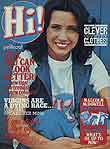 Hi! in
October 1975 had absorbed Petticoat. The editor was Bill Williamson.
It cost 10p for 40 pages 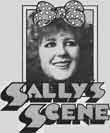 Columnist Sally O’Sullivan went on to become editorial director of IPC and was married to Times editor Charlie Wilson 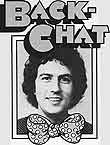 Columnist Richard Barber became editor of Woman's Own and OK! |
Hi! (with Petticoat)IPC Magazines, London. WeeklyA4 title aimed at young women. It was printed on coated paper for the colour pages and used cheaper, uncoated stock for the rest. It took over stablemate Petticoat in early 1975. The issue shown here featured Back Chat by Richard Barber, who was later to become editor of TV Times, Woman's Own, Clothes Show and OK! Also, the Sally’s Scene column by Sally O’Sullivan – later editor of Riva, Options, She, Harper's and Queen and Homes and Gardens editorial director of IPC; and founder of Cabal. Clockwork Orange's Malcolm McDowell was the main interviewee
but the main focus was clothes and beauty. |
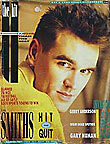 The
Hit in October 1985 |
The Hit [closed]IPC/Holborn Publishing Group, September 1985Editor Phil McNeill set out to produce a music and lifestyle weekly for 15-19-year-old men that was ‘Harder than the rest’, such as The Face. First issue included a free four-track vinyl EP with tracks by: Style Council, Jesus and Mary Chain, Redskins and Simply Red. Sales of 180,000 were predicted, but the first issue reached just 100,000, a total that fell to 80,000 by the sixth issue and the title was withdrawn. It was reported as having cost £1m and needing another £1m and a year of losses to break even, an investment IPC was unwilling to make. Emap was also investigating the men's market but rather than
a general interest magazine launched music title Q for
men aged 18-30. |
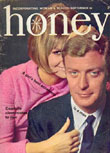 Honey from
1964. The main cover line read: 'A girl's best accessory is a man'
diagonally across the page on to Caine's shirt collar |
Honey [closed]Fleetway/IPC, monthly, Apr 1960 – September 1986Seminal fashion magazine for young women in the 1960s and 1970s. Regarded as the first teenage magazine. Launch editor was Audrey Slaughter (though only writers credited) for Fleetway Publications Ltd (Fleetway House, Farringdon St., London EC4). David Bailey did the cover shot for the Nov 1962 issue. Tag line first introduced in Oct 1960: 'For the teens and twenties.' By 1962 this had become: 'Young, gay and get-ahead.' The magazine took over Woman & Beauty in 1964 and at its height sold about 250,000 copies a month. Sales slid in the 1980s with the Jan-Jun 1980 figure of 214,349 falling to 158,438 for the same period in 1982, a drop of a quarter. In May 1986, IPC announced its closure and it was merged into 19. September was the cover date on the last issue, which featured an article on the best of Honey and promoted it as a 'collector's item'. The Times quoted publisher Heather Love as saying that the main reason for the closure was the lack of co-operation from the staff with new editor, Glenda Bailey. She had been appointed in January to give the magazine a new direction. Bailey later went on to launch Marie Claire. Back issues are sought after on eBay and regularly fetch good prices, particularly pre-1970 copies. IPC profile |
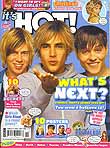 It's Hot - 8 February 2005 |
It's HotBBC magazines, London. Monthly. April 2002-July 2007Editor Peter Hart launched this title as a monthly (£1.80; 68 pages) aiming to sell to girls aged 9 to 13 ('tweenagers'). An alarm clock with bands’ faces (4 to collect) was the cover gift for the launch issue and sample issues were given away with the previous month's Live and Kicking, which folded into the new title. Contents included TV, pop, film and gossip. Each issue came with a 'high value' covermount, such as cosmetics, clocks or stationery. It also came with a 26-page cartoon magazine called Extra!, which carried cartoons and photo stories covering the BBC's TV soap Eastenders and bands such as McFly. In May 2007, BBC Magazines announced it was to close It's
Hot,
saying it had become unprofitable. |
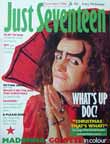 Just Seventeen – 17 Dec 1986 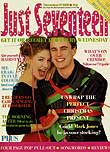 Just Seventeen of 21 Dec 1988. Cover lines included: 'What's on over Crimbo?' (a TV guide); and 'The morning after: what to do when you've gone too far' |
J-17/Just 17 [closed]Emap. 20 October 1983-April 2004Just Seventeen, 'a brand new magazine for girls' that was 'everything a girl could ask for', was launched with Dave Hepworth as editor, Zed Zawada as publisher and was designed by Steve Bush – the same people who launched Smash Hits. A free 48-page preview was distributed with Smash Hits (the launch price was 45p). It went up against IPC titles Oh Boy and My Guy but the presentation and design was far better. Hepworth claimed that the editorial was not as patronising as other teen magazines. Just Seventeen also had the advantage of being able to offer a 10-day lead time for advertising, far shorter than other magazines. Just Seventeen quickly established itself as the market leader until the arrival of Sugar in 1994 and sales slowly fell until it closed in 2004. Emap announced the closures of J-17 and The
Face at the same time. Just Seventeen built
the market for general interest teen titles. Both closures
were blamed on the changing marketplace causing sales to fall. |
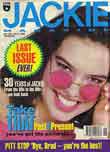 Last issue of Jackie (3 July 1993) featured TV actor Jason
Priestley (Brandon Walsh in Beverly
Hills 90210) as the centre-spread pin-up and features
about boy band Take That and actor Brad Pitt |
Jackie [closed]DC Thomson, Dundee. Weekly. 11 January 1962 – 3 July 1993 (1539 issues)Jackie was launched with Cliff Richard on the cover and a free 'twin heart' ring' for 6d. It came out every Thursday. Although the parent company was based in Scotland, it was published from offices at 185 Fleet St in London. Colour pin-ups of pop and film stars of the day were at the heart of the title, along with 'dreamy picture love stories', which evolved into photo strips, fashion and beaty shoots and the cathy and Claire problem page. At its height, Jackie sold 1.5 million copies a week. The last issue (50p) had actor Jason Priestley as the centre-spread pin-up; a feature 'Just mad about Brad [Pitt]'; and 'Take That: then and now'. It also carried a double-page promotion for new fortnightly Shout (at 75p), which the (unidentified) editor said would fill the 'Jackie gap'. Former staff include journalist and broadcaster Nina Myskow and Tracy Beaker author Jacqueline Wilson. In April 2007, a BBC2 documentary, Jackie Magazine: A Girl's
Best Friend, revealed
that newsreader Fiona Bruce had modelled for its photostrips. Also, she regularly
talked to a David Cassidy poster pinned on
her bedroom door. Other television presenters with a passion
for the title included Martha Kearney, Trisha Goddard and Anthea
Turner. |
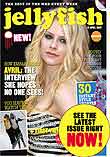
First
issue of Jellyfish (17 April 2007)
|
Jellyfish [digital- closed]National Magazines Co, London. Weekly digital magazine. 17 April 2007- August 2007Teen digital magazine sent out weekly via email. It was launched as 14-week test product backed by advertisers such as Rimmel and Alberto VO5. Celia Duncan was its editor. Viral marketing and advertising in other NatMags titles were used to promote the title. Jellyfish uses Ceros technology from Applecart, a UK e-publishing consultancy, to give the appearance of pages being turned over (also used by Emap for Digital Living and for Dennis Publishing's Monkey). It focused on fast fashion, celebrity videos and postings from readers. Products on the fashion and shopping pages can be bought online using a click-and-buy system. As the website said, 'If it moves, click on it.' NatMags launched Jellyfish as a teen product but repositioned
it for 18 to 25-year-olds in June, after the closure of Cosmo
Girl! The publisher cited distribution problems, with the
email meeting spam filters and
firewalls. The Guardian quoted NatMags chief executive Duncan Edwards
saying Jellyfish failed to find a sustainable business
model. |
Kick!Attic Brand Media, London. Monthly (13 a year). 2006-Six to 14-year-old boys and girls Football features, news and gossip for readers aged six to 14. |
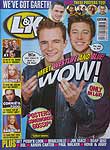 Live
and Kicking last issue 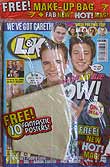 Last
issue of L&K bagged with a make-up bag and the first issue of It's
Hot |
Live and Kicking [closed]BBC Magazines, London. ?- April 2002 (issue 103)Spin-off from Saturday morning TV show of the same name. Declined alongside the show's popularity, suffering a 30% drop in sales over 2005. It's Hot was launched to replace the title. A sample issue of It's Hot was given away with Live and Kicking, which was folded into the new title BBC Magazines profile |
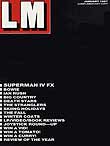
Preview
(issue 0) of LM |
LM (Leisure Monthly) [closed]Newsfield, Ludlow, Shropshire. Monthly. January 1987-?Short-lived male lifestyle title from computer magazine publisher. A free, 78-page edition was used to promote the launch, with the first issue set to go on sale on 15 January 1987. The editor was Roger Kean. Newsfield profile |
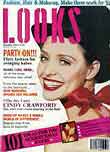 Looks at
the peak of its sales in December 1992 |
Looks / Celebrity Looks [closed]Emap/Emap Elan, September 1985- February 2002Emap spent £500,000 on the launch of this fashion, beauty and haircare monthly aimed at young women aged 16-24. Some £400,000 was spent on TV advertising and 400,000 copies of a preview issue were given away with the 18 September issue of Just 17. The first issue cost 70p for 96 pages with a print run of 200,000 – an industry rule of thumb would suggest the company was aiming for a settle-down circulation of 140,000. Ramune Burns was the editor under editorial director David Hepworth. It was an immediate success with a first ABC figure of 137,017. Burns left in July 1988 and took up a launch editor post at contract publisher Redwood on BBC Holidays 89. Morag Prunty took over the editor's chair. For the main teen titles in 1988, see Table 1.
In 1989, Mandi Norwood was appointed editor of Looks. However, by January 1991 she was in the editor's chair at Company, taking over from Gill Hudson. By 1992, Looks was selling 231,083 but this was the peak of its sales. In December 1997, Emap Elan repositioned the title in an attempt to boost sales, which had fallen to 151,000. Eleni Kyriacou became editor. The magazine was redesigned with more emphasis on celebrities and reader make-overs. Publishing director Delyth Smith said the approach was driven by changes in the teenage magazine market, with the success of ‘baby glossies’, such as Emap's own It's Bliss and Futura's Sugar. In December, BBC Magazines announced the closure of its TV spin-off style magazine, Clothes Show. Earlier in the year, Emap had relaunched Just Seventeen as J17, taking it from weekly to monthly. In May 2001, Looks changed its name to Celebrity Looks, though editor Margi Conklin said the change just reflected what had been the case since 1998. However, in February 2002, Celebrity Looks closed. |
||||||||||||||||||||||||||||||||||||||||||||||||||||||||||||||||||
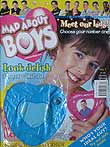 Mad About Boys first issue with blow-up, heart-shaped picture frame |
Mad about Boys [closed]Planet Three Publishing Network, London. Monthly. February 2001 – ?Editor Zia Allaway launched this title for young teens, which came with a blow-up heart-shaped picture frame as cover gift (£1.50; 32pp). 'Look delish for your first date' was the main cover line. It was a stapled, self-cover magazine. |
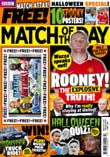
Match of the Day cover from 2011 |
Match of the Day (MotD)BBC Worldwide, London. Monthly, 1996-2001. Weekly, 2008- In 2008, MoTD magazine was relaunched as a weekly on Tuesdays for younger readers aged eight to 14. Four out of five readers are boys. In 2008, BBC Books published an annual based on the magazine. |

Typical Match! cover from 2011 |
Match!Emap/Bauer, Peterborough. Weekly. 1979-Match! magazine launched on 6 September 1979 with Kevin Keegan on the cover fronting a column, Learn To Play The Keegan Way. By the mid 1990s the magazine was the biggest selling weekly football title, with sales of 242,000. Rival weekly Shoot switched to a monthly frequency but closed in 2008. However, the BBC’s Match of the Day took the best-selling title in 2010. Bauer describes the readership as aged seven to 16, mainly boys with a median age of 12. Emap profile Bauer profile |
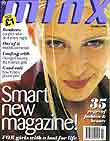 Minx magazine first issue cover October 1996 – ‘For girls with a lust for life’ in their early twenties who had grown out of Just 17 and More! |
Minx [closed]Emap Elan, London. Monthly. October 1996 – July 2000Minx, which had been known as 'Project Beryl', was described by Elan's managing director, Sue Hawken, as 'the next step up from More!' It was backed by£1.5 million spent on TV and radio advertising. The editor was Toni Rodgers and the first issue – ‘For girls with a lust for life’- cost £1. The target circulation was 170,000-180,000 and 50,000 copies were given away in welcome packs to women at colleges. It was described as a cross between National Magazine's Company and Loaded, that aimed to sell to 'young, assertive, rather scary young women'. Emap closed Minx in 2000, despite sales of 120,000 a month. Emap profile |
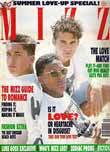 Mizz cover from 9 August 1989 (issue 114) 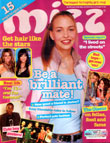 Mizz cover from 20 April 2005 |
Mizz [closed]IPC Media/Panini. Fortnightly. 1985-Mizz is the great survivor in the teen sector, celebrating 24 years on newsagents' shelves in 2009. In March 2006, Italian sticker-book publisher Panini bought Mizz from IPC. Former editor Leslie Sinoway was named editor and the company set about a relaunch. Sales had fallen 14.1 per cent to 60,425 in 2005. The deal took Panini UK into a new market and it bought Bliss later in the year from Emap. At the end of 2008, Mizz sales had risen to 65,609. IPC Media profile Panini profile |
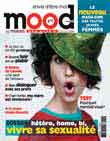 Mood
magazine first issue cover – from the Psychologies stable |
Mood (France)SNC Selma (Hachette), Paris. Mothly. October 2005-Fun feel for a teen magazine marketed as coming from the same team that launched Psychologies in 1988 – Jean Louis Servan-Schreiber and Perla Servan-Schreiber. It used a compact format (185mm by 224mm) with a print run for the first issue of 400,000 copies. It cost €2.50 for
148 pages. The directrice de la rédaction was Cécile
Lestienne with publicity by Fabien Livet. Mood |
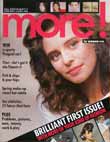 More! -
lau 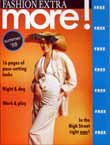 More! – 16-page fashion extra with the first issue. Centre spread was a double gatefold |
More!Emap London Lifestyle, fortnightly, 6 April 1988-2013Women's lifestyle/fashion title for 16- to 24-years-olds. Most readers are single and at university or working and living at home. Sales stood at 277,000 at the end of 2005 and 271,629 at end of 2006 (though the title had gone monthly by then). Emap profile |
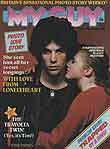
My Guy from 24 March 1979 |
My Guy [closed]IPC Magazines, London. A4 weekly.'Britain's sensational photo-story weekly!' was how My Guy marketed itself. The stories were backed up by A4 colour posters of pop stars. The cover on the left features Tim Sparkes, a John Travolta lookalike. IPC profile |
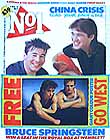
No1 from
15 June 1985
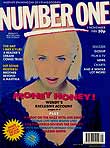
Wendy
James of Transvision Vamp on the cover for 1 November
1989. Number One carried the strap 'Britain's best-selling pop
weekly' (Smash Hits was fortnightly)
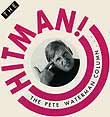 Pete Waterman was a columnist |
No 1 / Number One [closed]Holborn Publishing Group (IPC)/BBC Enterprises, London. Weekly. 1985-1990No 1 was a pop weekly aimed at the 13-to-19 age group. Reports said £343,500 was spent on TV advertising for the launch and the title was selling 146,302 copies a week by 1988. (Chartbeat was launched as a fortnightly on alternate weeks to Emap's Smash Hits at the same time but soon folded.) At the start of 1989, No1 was selling 130,721 copies a week – but fortnightly Smash Hits was roaring away at Emap with 786,886. No1 was redesigned with a more sophisticated look and logo under editor Colin ‘French Kiss’ Irwin. Columnists included Pete Waterman with a Hitman! piece, Help!, with Pat Thomas answering queries and Parlez-vous Pop? However, circulation wilted in the face of the competition from
Emap to 102,347. In April 1990, IPC sold the 'ailing' Number
One to
BBC Enterprises, which announced it was suspending publication
from August 8 to prepare for a relaunch in
October. Former Fast Forward editor
Nicky Smith, said No1 had lost its way under IPC
as it tried to appeal to an older readership. |
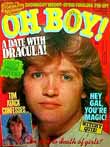 Oh Boy! from 27 October 1979
Oh Boy! from 27 October 1979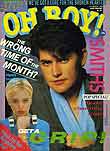
Oh Boy! from 31 March 1984 with Charlie Birchell from Simple Minds
|
Oh Boy!IPC Magazines, London. Weekly. 1977-1984In December 1984, IPC's Youth Group merged My Guy and Oh Boy! magazines. Oh Boy later became a Romantic Fiction monthly, along with Loving Monthly, My Guy Monthly, Photo Love Monthly and True Monthly. |
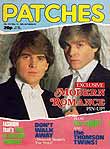 Patches – 14 May 1983 |
Patches |
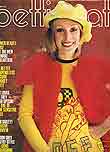
Petticoat (21 May 1971) had 40 pages and cost 6p
 Petticoat columnist Chris Ward went on to edit the Daily Express
Petticoat columnist Chris Ward went on to edit the Daily Express |
Petticoat [closed]IPC Magazines, London. Weekly. 1966-1975Petticoat was a tabloid-sized young women's magazine launched at the height of the Swinging Sixties. It fashioned itself as 'For the young and fancy free'. In 1967, it absorbed Trend, renaming itself Petticoat/Trend until it dropped the latter part about a year later. By this time, its slogan had changed to 'The new young woman'. The issue shown here (21 May 1971) had Terry Hornett as editor – who went on to found publisher Carlton – and columns by Chris Ward (later editor of the Daily Express and joint founder of customer magazine publisher Redwood) and Anne Nightingale – Britain’s first female DJ on Radio 1. The problem page was by Claire Rayner. It was printed by Eric Bemrose in Long Lane, Liverpool. Other staff included Janet Street-Porter, who describes in her
memoirs how she was taken on in 1967 by Audrey Slaughter, editor
of Honey, for Petticoat and stayed until 1969,
when she went to the Daily Mail under women's editor
Shirley Conran. Working with her at Petticoat was Eve
Pollard who later edited the Sunday Mirror and the Sunday
Express before launching Aura.
Another Honey-turned-Petticoat staffer
was Jane Ennis, who worked at Nova, the Sunday
Mirror, Best and
Today before making celebrity weekly Now its
market leader, stepping down in 2007, only to take over at ill-starred First for
Emap, which was closed by Bauer after its 2008 takeover. PR hipster
Lynne Franks – supposedly the model for Edina (played by Jennifer Saunders) in TV series Absolutely Fabulous – and
Maggie Goodman – who went on to be editor of Company and Hello! -
also went through Petticoat's doors. |
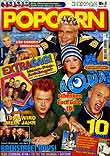
Popcorn,
first issue of the German language pop music magazine, in January 1998
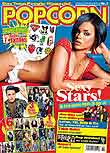 Popcorn
in February 2008 |
PopcornMarquard Media / Axel-Springer, Germany. Monthly. 1998-German-controlled title that – unlike teen mags in the English-speaking world – sells to both boys and girls. Again unlike the UK, frees gift are bound into the magazine rather than tipped on the cover. Posters were a big selling feature of the first issue – there were 10, including Backstreet Boys, Spice Girls, Moffatts, Hanson, The Boyz, Brooklyn Bounce, Gil and 'N Sync. Axel Springer bought the title, along with 12 others, from Zurich-based Marquard Media for an undisclosed sum in November 1999. Springer said the deal gave it the lead in the teen markets in Germany, Poland and Hungary and across Europe. Popcorn then had a Europe-wide circulation of more than 600,000, and Madchen, another monthly in the deal, sold 400,000. Popcorn has been licensed or jointly published in Poland (2000), Hungary (2000), the Czech Republic (2001), Romania (2001) and Latvia (2004). |
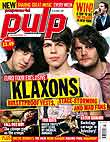
Popworld Pulp – Brooklands spin-off based on Channel
4 series closed after 2 issues |
Popworld Pulp [closed]Brooklands Group. Weekly. 11-18 April 2007Channel 4 spin-off for £1.49 that aimed to vacate the hole left by the closure of Smash Hits!. However, the title closed after just two issues! The company said the title had researched well but that buyers just failed to appear. Brooklands profile |
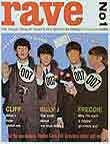 Rave:
'The frank look at today's pop world' with the Beatles on the cover
of its first issue in 1964 |
Rave [closed]George Newnes (IPC). Pop. Monthly. February 1964-1971Rave gave readers 'The frank look at today's pop world' in 64 pages each month, about a quarter of them in colour. Early covers were dominated by the Merseybeat scene such as the Beatles and Cilla Black. There was a poster on the back cover and on the colour centre pages. Radio and TV disc jockey (DJ) Alan Freeman wrote interviews. The magazine expanded into a more general youth magazine, covering fashion and film, particularly pin-up Hollywood stars such as Steve McQueen. It was folded into the George Newnes teen weekly Fabulous 208 in September 1971 Rave magazine covers from 1964 to 1971 |
Shoot [now web only]IPC/Pedigree Books. Weekly/monthly/weekly. August 1969-June 2008 (now web/app only)Shoot was launched as a weekly by IPC and reached sales of 120,000 copies in 1996. It changed to a monthly magazine in 2001 and was selling about 36,000 copies at the end of 2007. It was relaunched as a weekly in March 2008 to try to compete with the BBC’s relaunched Match of the Day and Attic’s Kick! but closed in June. Pedigree Books, which published a Shoot annual, bought the brand name and runs it as a website and an app. |
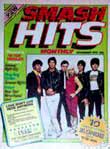 Debbie
Harry and Blondie were on the cover of the first issue of Smash
Hits in 1978 |
Smash Hits! [closed]Emap. Monthly. November 1978 – 13 February 2006.Smash Hits! became an iconic title whose sales peaked at a million in 1989 but fell steadily to 120,000, behind BBC rival weekly Top of the Pops, which is shored up by its link to the TV programme. Emap also closed Just Seventeen in 2004, the closures signifying a switch in teenage spending to online and mobile phone based media. The name lives on as a digital music TV channel and radio station, online and as a mobile phone service. A temporary 'blubathon' website was set up to mark the title's closure at SmashHitsForever. Smash Hits! was a springboard for many journalists, including founding editor Nick Logan (The Face), David Hepworth and Mark Ellen (who together founded Word publisher Development Hell), Barry McIlheney and Heat editor Mark Frith. The week the closure was announced, a copy of the first issue sold on Ebay for £30. The seller, Ruth, said: 'I bought it. Smash Hits! was the best pop magazine of its time. I'm 35 now and I used to buy it regularly from about the age of 8 to 13. I remember tearing out the posters to cover my walls and singing along really girlie to the songs.' A book, The Best of Smash Hits by Mark Frith (editor),
was published by Little, Brown in 2006 at £14.99. |
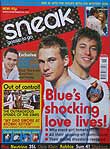 First
issue of Sneak, a
'teenage Heat' 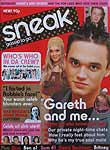 Sneak -
free copy with Smash Hits of 17 April 2002 (below)
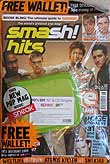 Smash
Hits with
preview copy of Sneak and free wallet 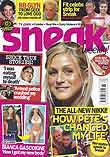 Last
issue of Sneak |
Sneak [closed]Emap Performance, London. Weekly. 30 April 2002 – August 2006Launched as a ‘teenage Heat’ under editor Jennifer Cawthron (68 pages; 90p). Had been called Project Monkey. Extensive sampling strategy: free copy given away the previous week with Smash Hits; sample copy in December with Bliss. Sneak's circulation peaked in 2003 at 104,174, but fell to just 74,299 before being closed. Brand was not maintained online, unlike many other teen closures. Emap profile |
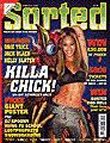 First
issue of Sorted, a teenage monthly for
boys |
Sorted [closed]Sorted Communications, Brighton. February – May 2004Monthly for teenage boys aged 12-16. The first issue (£2.50; 100pp) included an A1-sized poster for Whiplash computer games on one side and the film School of Rock on the other. The editor was Martin Klipp. However, after just four issues, it closed. The fifth issue, featuring a cover interiew with David Beckham, was at the printers. In a report in the Press Gazette, editor Piers Townley (who had been deputy for the launch issue) blamed the profligacy of the founder and chairman Russell Church, saying a 200,000 print run for the launch had been 'commercial suicide'. |
Star [closed]BBC Magazines, Weekly. 18 October 2000-2001Hello! For 'tweenagers' aged between 11 and 16 who were too smart for pre-teen magazines, but too young for Company. Priced at £1.60. Closed a year later. BBC Magazines profile |
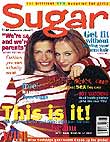 Sugar first issue November 1994. Within a year it was selling 205,000 copies. However, its sexual content was a factor in the establishment of the Teenage Magazine Arbitration Panel. TMAP was an industry self-regulatory body. It aimed to ensure that the sexual content of teenage magazines was presented in a responsible and appropriate manner |
SugarAttic Futura/HFUK/NatMags/Hearst. Monthly. November 1994-Sugar – aimed at girls aged 13 to 19 – was an immediate success, exceeding its 150,000 circulation target to achieve a first ABC figure of 205,000. It went on to overtake Emap’s long-established market leader Just 17. Sugar retained that position in 2009, although sales had fallen from 200,000 to 158,000 by the end of 2008. Emap relaunched J17 and also responded by launching It's Bliss. 1994 was a boom time for the sector with most titles putting on sales, even with the launches. But the teen sector took a nose-dive and Sugar closed at the end of 2010 with sales of 113,320 a month. The age of the average reader was 16. The company carried on with and expanded the website spin-off, Sugarscape.com. The magazine was compared with IPC’s lads’ mag Loaded, in using sex to win over young readers, with articles such as ‘Is sex driving you crazy?' Explicit sexual editorial in Sugar and other teen magazines was a controversial issue and led to the setting up of TMAP. In 1998, Sugar, by then the best-selling young women's monthly, signed a deal with Force 9 to develop a clothing range, and with Westbridge for a range of lingerie. Yet the teen magazine market was seen as having peaked, registering an overall decline for the first time since the launch of Sugar. Overall sector sales slumped 4.6% in the first half of this year, compared with the latter half of 1997. Sugar saw its first drop in sales, 3% year on year. In 2005, Sugar launched a campaign against underage sex after the Qualifications and Curriculum Authority said teachers should use such titles in class to help teenagers discuss their problems. A year later, after 11 years, Sugar lost its place as the number one girl's magazine to Bliss. The contents were based on a mix of real-life stories, shopping, beauty, horoscopes and a lads section. Both titles had reduced to 'schoolbag' size, with the same pagination, cover price, advertising to editorial ratio and the same number and type of advertisers. Free cover gifts – make-up, bags and flip flops – were seen as important in attracting buyers, who were regarded as fickle. Real-life stories with headlines such as 'My parents used me as a sex slave' and 'My cocaine and ecstasy binges ... with Mum' were used in both titles. In 2006, Sugar teamed up with the NSPCC for a national drive against bullying with a 'Stand up, speak out' campaign for readers to design a poster. In December 2007, HFUK launched Sugarscape.com, which claimed to be 'the web’s first social bookmarking tool aimed at teen girls'. |
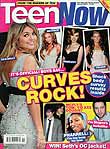 Teen
Now - spring 2006 cover |
Teen NowIPC Connect, London. Spring 2004 –Editor Jeremy Mark launched this spin-off quarterly for younger readers from celebrity weekly Now. Followed teen celeb mags Emap's Sneak (2002) and the BBC's Star (2000), which both failed, but IPC's effort was much less ambitious. For the first issue, the cover photo of Britney Spears was linked
to an article on celebs who were single. There were eight pages
of posters, including a centre-spread of Orlando Bloom.
Lots of pages of house ads: for relaunched 19, Mizz and Now.
|
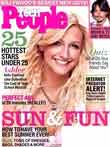 Teen People |
Teen People (US) [closed]Time Inc. Weekly. January 1998 – September 2006With the number of US teenagers forcast to rise from 29 million in 1997 to 34m by 2010, publishers were keen to address a growing market. Teen People was a spin-off from the poplular US weekly People and one of three teen launches around this time, the others being Snap! from Bauer Publishing (September) for 14-to-19-year-old girls and Weider's Jump (1997; also licensed in the UK in 1999), aimed at girls aged 12 to Teen People promised advertisers sales of 500,000 copies and issue with the editorial based around celebrities and teenage fashion and beauty. Teen People was suspended in 2006 with the publisher blaming a switch by youngsters to online media. |
Teen Vogue (US)Condé Nast, monthly, 2001-In 2003, Amy Astley, editor of Teen Vogue in the US, said she was shocked by UK titles such as Bliss. 'They are really bad,' she told the Observer newspaper. 'They are really smutty. They have a real focus on sex and that's not what we are doing at all. That is not our focus.' Astley, whom the article by Paul Harris described as a 'protegee of legendary Vogue editor Anna "Nuclear" Wintour', produces a fashion-based title with a no-sex rule. Condé Nast profile |
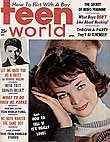
Teen
World cover in April 1960 |
Teen World (US)'How to flirt with a boy' was the strap line above the masthead |
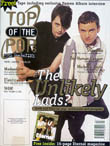 Top
of the Pops first issue cover in March 1995 |
Top of the PopsBBC Worldwide, London. Fortnightly. March 1995-Brand extension from the long-running television series, launched with Peter Loraine as editor (£1.25; 52 pages). It came with a cassette and poster to challenge, and ultimately defeat, Emap's Smash Hits, which closed in January in January 2006 after its sales halved in a year to 92,398. Six months later, BBC TV announced the end of Top
of the Pops,
the world's longest running weekly music show (started in January
1964). The closure cast doubt over the magazine spin-off, whose
sales had dropped to 96,576. However, with the
demise of Smash Hits, TotP's sales recovered
to 105,025 by 2007. |
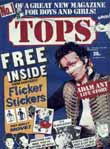 Tops -
based on pop music and TV features
|
Tops [closed]10 October 1981 – ?'The Great New Magazine for Boys and Girls' with 31 pages of comic strips, posters and articles, including The Professionals, Adam Ant comic strip, Little and Large, Sally James interview, Todd Carty's Schooldays and Kid's Army. Came with a free cover gift of flicker stickers. |
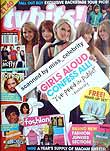 TV
Hits -
June 2007 |
TV HitsAttic Futura / Hachette Filipacchi UK / Essential Publishing Ltd, Colchester (owned by Hubert Burda Media UK). Monthly, August 1989 -Monthly for 12-to-18 year olds first launched in Australia in 1988 and then in the UK. Its first ABC figure was 148,206 (Jan-Jun 1981). By 1994, it was selling 189,000 with an average reader age of 14.4 years. In 1995, WH Smith and Sainsbury took the title off their shelves after the magazine gave a 16-year-old girl explicit advice on performing oral sex. TV Hits was sold to Essential Publishing in June 2005. Attic Futura profile Burda profile Essential profile HFUK profile |
 We Love Pop -
first issue sales of 119,000 seemed to go against the story of decline in the teen market |
We Love Pop [closed]Egmont UK. Monthly, autumn 2011 launchEgmont, which describes itself as 'a leading UK children's publisher of books and magazines', moves up the age range and into the pop sector. Target market is girls aged 13 to 15. The 'launch circulattion' was reported as 119,000 copies. If this was actual sales, it would suggest a setttle-down figure of about 84,000 copies an issue (first issues tend to have higher sales because of the number of people who try them out as a result of the advertising and marketing push that accompanies a launch). Egmont |
Top teenage magazines (end 2010) |
|||
| Title | Publisher | Frequency | Sales* |
|---|---|---|---|
| Top of the Pops | BBC Magazines | fortnightly | 98,030 |
| Bliss | Panini | monthly | 73,002 |
| Girl Talk (girls) | BBC Magazines | fortnightly | 67,959 |
| Match of the Day (football) | BBC Magazines | weekly | 58,447 |
| Match (football) | Bauer | weekly | 57,108 |
| Kick! (football) | Attic Brand Media | monthly | 51,413 |
| Shout | DC Thomson | monthly | 47,814 |
| Mizz | Panini | fortnightly | 35,837 |
| Kiss (Eire) | Minjara Ltd (Dublin) | monthly | 22,469 |
Source: *ABC, Jul-Dec 2010 |
|||
Top teenage magazines (end 2008) |
|||
| Title | Publisher | Frequency | ABC figure* |
|---|---|---|---|
| Sugar | HFUK | monthly | 158,835 |
| Top of the Pops | BBC Magazines | fortnightly | 130,174 |
| Bliss | Panini | monthly | 107,112 |
| Shout | DC Thomson | monthly | 84,937 |
| Mizz | Panini | fortnightly | 65,609 |
| Kiss | Minjara Ltd | monthly | 21,428 |
Source: *ABC, Jul-Dec 2010 |
|||
Teenage magazines: details and sales |
|||
| Title | Publisher | Launch date | Sales 2006* |
|---|---|---|---|
| 19 (M) | IPC SouthBank | 1968 | closed 2004 |
| B (M) | Hachette Filipacchi UK | 1997 (Attic Futura) | closed 2006 with sales of 150,536 |
| Big! (M) | Emap | 1990 | closed |
| Bliss / It's Bliss (M) | Emap | 1995 | 151,729 |
| Chatterbox (F) | BBC Worldwide | 1995 | |
| Clothes Show (M) | BBC Worldwide | 1984 | closed 1997 |
| Cosmo Girl (M) | National Magazine Company | 2001 | closed 2007 (131,956) |
| Date (W) | Odhams | 1960 | |
| Elle Girl (Q) | Hachette Filipacchi UK | 1985 (Murdoch/ Hachette) | closed 2005 |
| (The) Face | Wagadon/Emap | 57,013 | |
| Girl Talk (F) | BBC Worldwide | 1995 | n/a |
| Hi! (M) | IPC Magazines | 1975? | n/a |
| Honey (M) | Carlton/Reed/IPC | 1962 | merged with 19 in 1986 |
| It's Hot (M) | BBC Worldwide | 2002 | n/a |
| J-17 / Just 17 (W) | Emap | 1983 | closed 2004 |
| Jackie (W) | DC Thomson | 1962 | closed 1993 |
| Jellyfish (digital weekly) | NatMags | April 2007 | |
| Kiss (M) | Minjara | ? | 17,575 |
| Live and Kicking | BBC Worldwide | 200? | closed ? |
| Looks / Celebrity Looks | Emap | 1995 | closed 2002 |
| Mad About Boys (M) | Planet Three | 2001 | closed 2001? |
| Minx | Emap | 1996 | closed 2000 |
| Mizz (F) | Panini (UK) | 1985 (IPC) | 59,934 |
| Mirabelle | M | 19 | closed ? |
| Mood (M) | SMC Selma (France) | 2005 | n/a |
| More! (fortnightly) |
Emap London Lifestyle | 1988 | 277,862 |
| My Guy | IPC Media | 1978-? | n/a |
| No 1 / Number One (W) | Holborn Group (IPC) | 1985-1990 | closed |
| Petticoat | IPC Media | 1967- 1975 | merged with HI! in 1975 |
| Popcorn | VJM (Germany) | 1998 | n/a |
| Popworld Pulp | Brookland / Channel 4 | April 2007 | closed April 2007 |
| Shout | DC Thomson | 19 | 80,901 |
| Smash Hits (M) | Emap | 1978 | closed 2006 |
| Sneak (W) | Emap | 2002 | closed 2006 |
| Sorted (M) | Sorted Comms | 2004 | closed 2004 |
| Star (W) | BBC Magazines | 2000 | closed 2001 |
| Sugar (M) | HFUK | 1994 (Attic Futura) | 200,541 closed 2010 with sales of 113,320 |
| Teen Now (biannual) | IPC Media | 2004 | n/a |
| Teen People (W) | Time Inc (US) | ? | closed 2006 |
| Teen Vogue (M) | Condé Nast | 2001 | ? |
| Top of the Pops (F) | BBC Worldwide | 1995 | 105,025 |
| Tops (W) | October 1991 | closed | |
| TV Hits (M) | Essential | 1989 | 47,321 |
| We Love Pop (M) | Egmont | 2011 | n/a |
*Source: Audit Bureau of Circulations (abc.org.uk) |
|||



